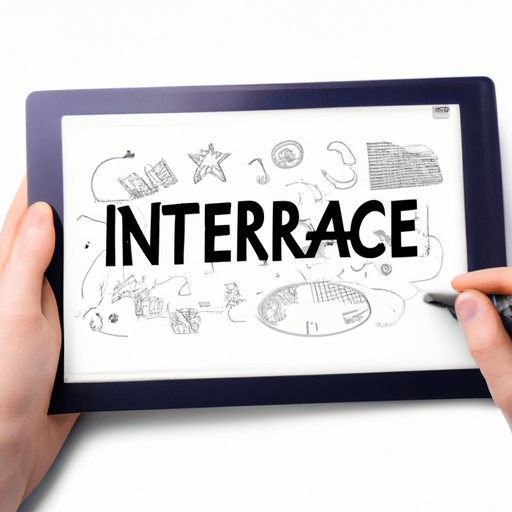Title: The Evolution of User Interfaces: A Comprehensive Overview

Evolution of User Interfaces: The concept of user interfaces dates back to the early days of computing when punch cards and command-line interfaces were the norm. However, it was the introduction of graphical user interfaces (GUIs) in the 1980s that revolutionized the way we interact with computers. GUIs replaced text-based interfaces with visual elements such as icons, windows, and menus, making computing more accessible to the masses.
Since then, user interfaces have continued to evolve rapidly. The rise of touchscreens and mobile devices in the late 2000s brought about a new era of interaction, with gestures and swipes becoming the primary means of control. Today, we are witnessing the emergence of voice-controlled interfaces, virtual reality (VR), augmented reality (AR), and even brain-computer interfaces (BCIs), pushing the boundaries of what is possible.
Types of User Interfaces: User interfaces can be categorized into several types, each catering to different needs and contexts. Some of the most common types include:
1. Graphical User Interfaces (GUIs): GUIs use visual elements such as icons, buttons, and menus to facilitate interaction. They are widely used in desktop and mobile applications, providing a familiar and intuitive experience for users.
2. Command-Line Interfaces (CLIs): CLIs rely on text-based commands to interact with a system. While less user-friendly than GUIs, they are still prevalent in certain domains, such as programming and system administration.
3. Touchscreen Interfaces: Touchscreens have become ubiquitous in smartphones and tablets, allowing users to directly interact with the interface using their fingers. Multi-touch gestures, such as pinch-to-zoom and swipe, have become second nature to many.
4. Voice User Interfaces (VUIs): VUIs enable users to interact with devices using voice commands. Virtual assistants like Siri, Alexa, and Google Assistant have popularized this interface type, making it possible to control various devices and access information through natural language.
5. Gesture-Based Interfaces: Gesture-based interfaces utilize body movements and gestures to control devices. This interface type gained prominence with the advent of motion-sensing technologies like Microsoft's Kinect and is now being integrated into virtual reality and gaming systems.
Design Principles for User Interfaces: Creating effective user interfaces requires careful consideration of design principles that enhance usability and user experience. Some key principles include:
1. Simplicity: Interfaces should be intuitive and easy to understand, minimizing cognitive load for users. Clear and concise visual elements, logical navigation, and consistent design patterns contribute to simplicity.
2. Consistency: Consistency in design elements, layout, and interaction patterns across different screens and devices helps users build mental models and reduces the learning curve.
3. Feedback: Providing immediate and meaningful feedback to user actions helps them understand the system's response and ensures a sense of control and engagement.
4. Accessibility: Interfaces should be accessible to users with disabilities, considering factors such as color contrast, font size, and support for assistive technologies.
5. Flexibility: Interfaces should be adaptable to different user preferences and contexts. Customizable settings, adjustable font sizes, and support for multiple languages are examples of flexible design.
Future Trends in User Interfaces: As technology continues to advance, user interfaces are poised to undergo further transformations. Some emerging trends include:
1. Natural Language Processing: With advancements in natural language processing and machine learning, interfaces will become more conversational and capable of understanding complex user queries.
2. Virtual and Augmented Reality: VR and AR interfaces offer immersive experiences, enabling users to interact with digital content in three-dimensional space. These interfaces have vast potential in gaming, education, and training.
3. Haptic Feedback: Haptic feedback, such as vibrations and tactile sensations, can enhance user experience by providing physical feedback in response to interactions. This technology is already being used in smartphones and gaming controllers.
4. Brain-Computer Interfaces: BCIs hold the promise of direct communication between the human brain and machines. While still in the early stages of development, BCIs have the potential to revolutionize how we interact with technology.
Conclusion: User interfaces have come a long way since the early days of computing, evolving to meet the changing needs and expectations of users. From command-line interfaces to touchscreens and voice-controlled systems, interfaces have become more intuitive, immersive, and accessible. As technology continues to advance, we can expect interfaces to become even more seamless, natural, and personalized. The future of user interfaces holds exciting possibilities, and it will be fascinating to witness the next wave of innovation in this field.






